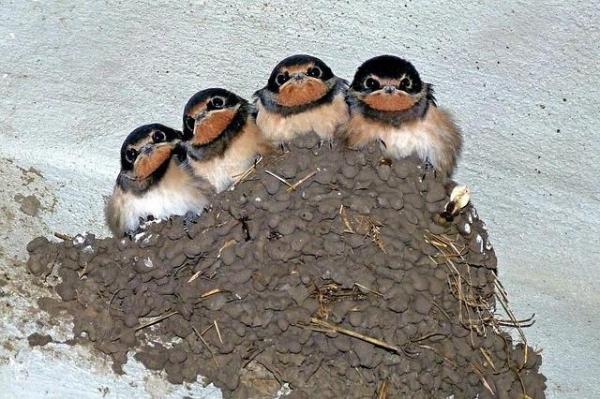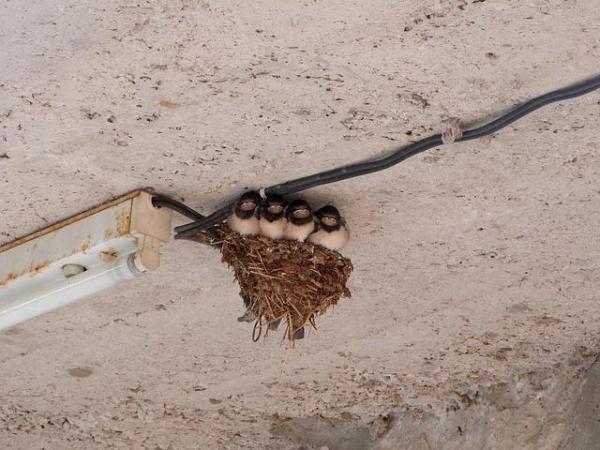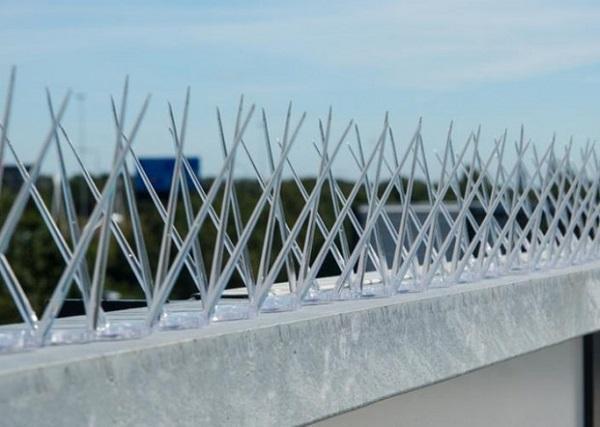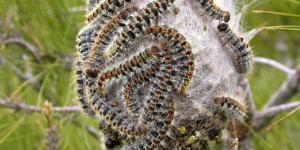How to Stop Swallow Nesting


Ever find yourself sharing your balcony with a family of swallows? While these graceful birds are fascinating to watch, their nesting habits can sometimes create challenges. The good news? You can keep your space swallow-free without harming the birds or their eggs.
This oneHOWTO guide explores humane and effective methods to deter swallows from nesting in unwanted areas. Get ready to reclaim your balcony and enjoy a peaceful (and mess-free!) outdoor haven.
Steps to follow:
While swallows are beautiful birds with fascinating aerial acrobatics, their nesting habits can sometimes create problems for homeowners. Swallows, being migratory birds, often gather in large numbers during springtime or the onset of spring. This mass migration can pose a challenge for some people as swallows may choose balconies, roofs, windows, or terraces as ideal nesting spots.
While it's important to avoid disturbing these birds, harming them, or interfering with their eggs or chicks, there are ways to prevent nests from forming without causing harm.
Swallows build mud nests, often under eaves or porches. These nests can become quite large and messy, dropping mud and feathers onto walkways and patios below. Additionally, swallow droppings can attract insects and carry diseases.
The constant scratching and building of nests can damage gutters, siding, and paint. The mud itself can also be difficult to clean from some surfaces.
Swallow colonies can be quite vocal, especially during breeding season. This can be disruptive for people who enjoy sitting on their porches or patios.
Also, large nests can block vents and soffits, potentially causing ventilation problems and even attracting other animals like rodents.
It's crucial to note that in some countries, laws prohibit the destruction of nests while swallows are still inhabiting them. Therefore, it's necessary to wait until the birds have vacated the nest before taking any necessary preventive measures.

One of the most effective methods to deter swallows from nesting is by installing safety nets in the areas where they typically nest. These nets prevent the birds from accessing their preferred nesting spots, prompting them to seek alternative locations. Meshes with a size of 19 mm are recommended for effectively protecting common nesting areas from these birds.
Anti-perching spikes, typically used for pigeons, can also be an effective solution for preventing swallows from nesting. It's crucial to install these spikes correctly to ensure their effectiveness. Since swallows nest in the walls just underneath the roof, this is where the spikes should be strategically installed.
Additionally, it's advisable to consult with the seller of the spikes to ensure you purchase a model that is suitable for deterring swallows specifically.

Yes, there is a cost-effective alternative to prevent swallows from nesting, which involves using fishing line or transparent nylon thread. This method creates a perceived barrier that makes the swallows feel threatened, as if they would become trapped if they attempt to cross it.
To implement this solution effectively, stretch the thread across the areas where swallows typically nest, such as near roofs or balconies. Ensure the thread is taut and separated slightly from the wall, resembling a barrier. When swallows approach, they will sense the obstruction and choose to nest elsewhere, avoiding the perceived danger.
This approach is simple, inexpensive, and can be quickly implemented to deter nesting without harming the birds.
Another highly effective method to deter swallows from nesting in buildings is by using reflective materials that scare many birds away.
An economical option for this is aluminum foil. Simply cut strips of aluminum foil about 3 centimeters (1.2 inches) wide and at least 30 centimeters (11.8 inches) long, and attach them along a rope. Then, stretch the rope from one end to the other in areas where swallows tend to nest, following the previous step's guidelines. The reflective nature of the foil will create shine and glare that swallows find uncomfortable, thus discouraging them from nesting in those areas of your home.
You can also use other materials that shine too, e.g. pieces of old CDs and DVDs that you have at home. They're great for deterring birds.

Bird repellent gel, commonly used to deter pigeons and other birds from perching on window and balcony railings, is also effective in preventing swallows from nesting. Apply the gel approximately 8 centimeters (about 3 inches) below the ceiling, which is the typical height where swallows tend to build their nests.
This method prevents swallows from adhering mud to the wall successfully and can remain effective for several years.
If none of these alternatives seem suitable, consider consulting a specialist shop for an ultrasound device designed to deter swallows from nesting on your property. A professional can advise you on its effectiveness and the optimal placement for achieving the desired results.
If you want to read similar articles to How to Stop Swallow Nesting, we recommend you visit our Maintenance and home security category.







